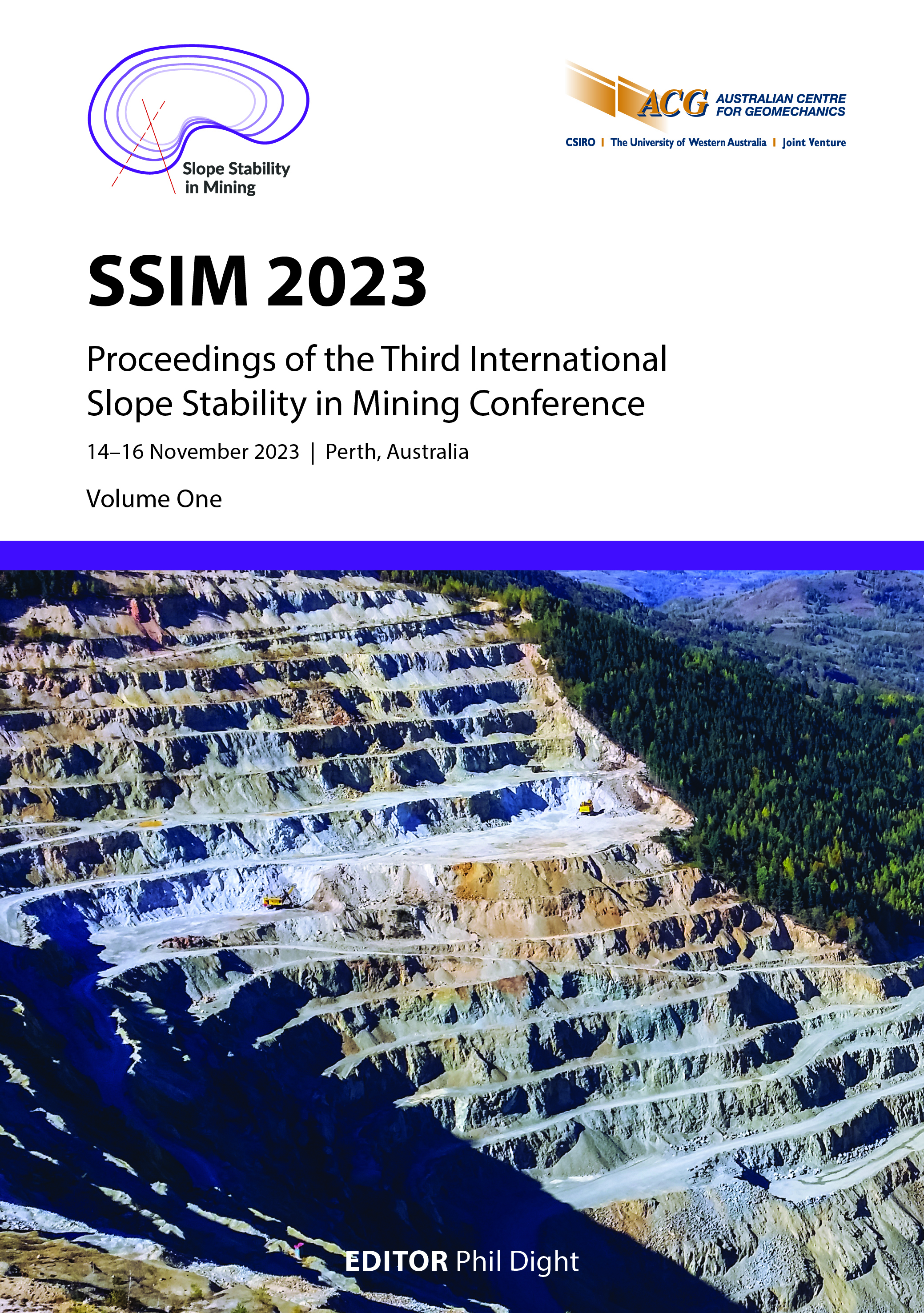A low-cost terrestrial stereo-pair photogrammetric monitoring system for highly hazardous areas

|
Authors: Guccione, DE; Giacomini, A; Thoeni, K; Bahootoroody, F; Roncella, R |
DOI https://doi.org/10.36487/ACG_repo/2335_56
Cite As:
Guccione, DE, Giacomini, A, Thoeni, K, Bahootoroody, F & Roncella, R 2023, 'A low-cost terrestrial stereo-pair photogrammetric monitoring system for highly hazardous areas', in PM Dight (ed.), SSIM 2023: Third International Slope Stability in Mining Conference, Australian Centre for Geomechanics, Perth, pp. 803-816, https://doi.org/10.36487/ACG_repo/2335_56
Abstract:
Spatial data are nowadays commonly used in engineering practice to support geohazard managements, identify and classify possible instabilities, and monitor their activity. Terrestrial laser scanners and groundbased radar systems, often implemented in mobile vehicles, are widely used within the mining sector to conduct periodic surveys of extended areas of hazardous access, and track deformations in almost real time. While such systems are very accurate and can operate in various weather conditions, their utilisation could incur substantial costs and require high technical expertise. Photogrammetry is considered as a viable and cost-effective alternative to traditional slope monitoring techniques. This paper presents recent improvements of a low-cost, autonomous terrestrial stereo-pair photogrammetric monitoring system specifically developed by the authors to monitor highly hazardous areas in surface mining environments and its application to the monitoring of a highwall face located in a mine site in New South Wales (Australia). The system is used to identify the sources of block instabilities (detachments) over several months to estimate the volumes of rock detached and their frequency over the period of observation. The system consists of two units. Each unit includes a box containing a high-resolution digital single-lens reflex (DSLR) camera (Nikon D850) controlled by a Raspberry Pi microcomputer. The system allows the collection of synchronised images at different periods. The images are downloaded remotely and processed automatically on a server to obtain a 3D model (e.g. 3D point cloud and mesh). The system also includes a new in-house web interface that allows the automatic comparison of 3D models obtained at various periods (change detection) and, therefore, to track and measure rock volume detachments. The web interface also allows the user to validate the identified detachments by visual comparison of the section of the original images where the difference was detected. A detailed analysis of the evolution of the rock surface, volumes and frequency of the rocks dislodging from the highwall over a period of several months is provided. This information constitutes valuable data for a detailed inventory of the rockfall spatial-temporal occurrence and magnitude. The data allows correlation of the occurrence of rockfall events with the rock lithology and weather conditions (e.g. rainfall events), confirming the capability of the system to generate useful data that would otherwise require extended periods of direct observation.
Keywords: slope monitoring, rockfall, surface mining, photogrammetry
References:
Agisoft 2023, Agisoft Metashape, computer software, www.agisoft.com/downloads/installer
Besl, PJ & McKay, ND 1992, ‘Method for registration of 3-D shapes’, Sensor Fusion IV: Control Paradigms and Data Structures, vol. 1611, pp. 586–606.
Bruno, N, Forlani, G, Giacomini, A, Roncella, R, Thoeni, K 2021, ‘Influence of illumination changes on image-based 3D surface reconstruction’, ISPRS - International Archives of the Photogrammetry, Remote Sensing and Spatial Information Sciences, XLIII-B2-2021, pp. 701–708.
Bruno, N, Roncella, R, Diotri, F, Thoeni, K, Giacomini, A 2022, ‘Photogrammetric digital surface model reconstruction in extreme lowlight environment’, Remote Sensing, vol. 14, no. 15.
Giacomini, A, Thoeni, K, Santise, M, Diotri, F, Booth, S, Fityus, S & Roncella, R 2020, ‘Temporal-spatial frequency rockfall data from open-pit highwalls using a low-cost monitoring system’, Remote Sensing, vol. 12, no. 15.
Read, J & Stacey, P 2010, Guidelines for Open Pit Slope Design, CRC Press, Boca Raton.
Scaioni, M, Longoni, L, Melillo, V & Papini, M 2014, ‘Remote sensing for landslide investigations: an overview of recent achievements and perspectives’, Remote Sensing, vol. 6, pp. 9600–9652.
Sharron, R & Eberhardt, E 2020, Guidelines for Slope Performance Monitoring, CSIRO Publishing, Melbourne.
Thoeni, K, Santise, M, Guccione, DE, Fityus, S, Roncella, R & Giacomini, A 2018, ‘Use of low-cost terrestrial and aerial imaging sensors for geotechnical applications’, Australian Geomechanics Journal, vol. 53, no. 3, pp. 101–122.
© Copyright 2025, Australian Centre for Geomechanics (ACG), The University of Western Australia. All rights reserved.
View copyright/legal information
Please direct any queries or error reports to repository-acg@uwa.edu.au
View copyright/legal information
Please direct any queries or error reports to repository-acg@uwa.edu.au

